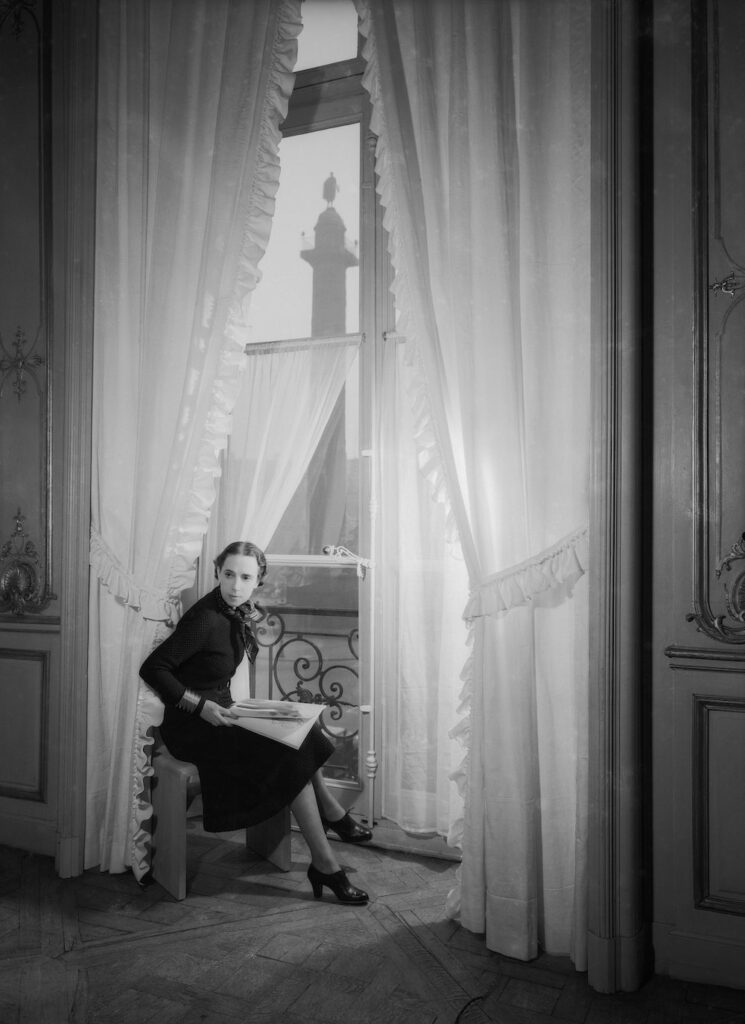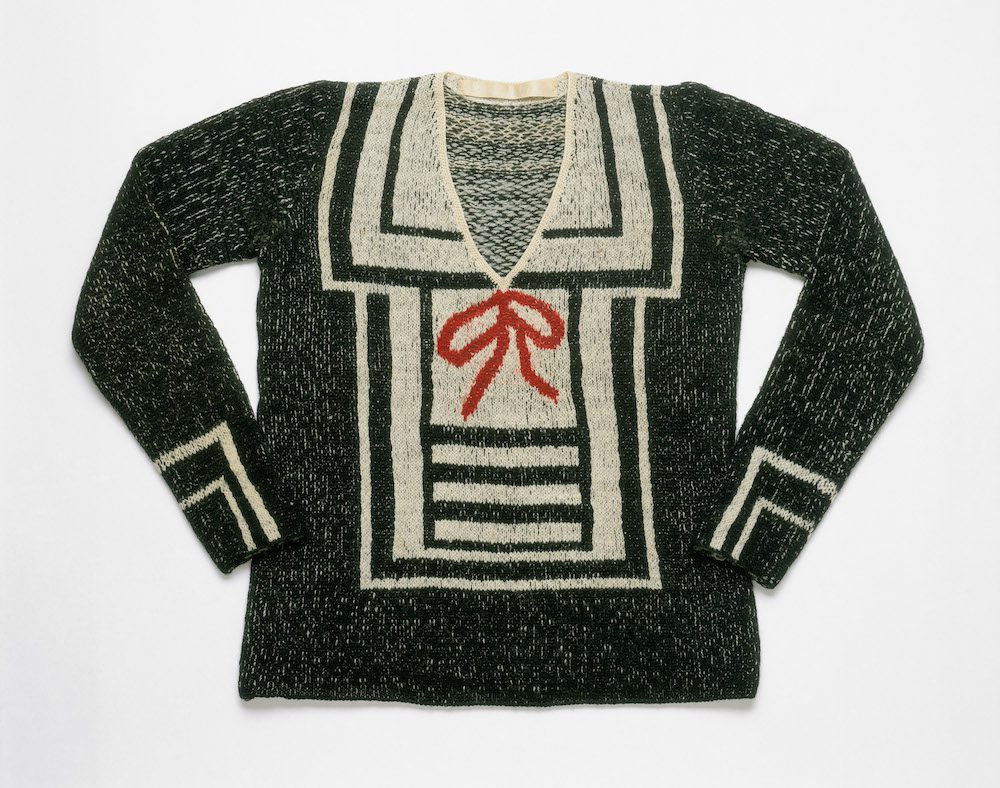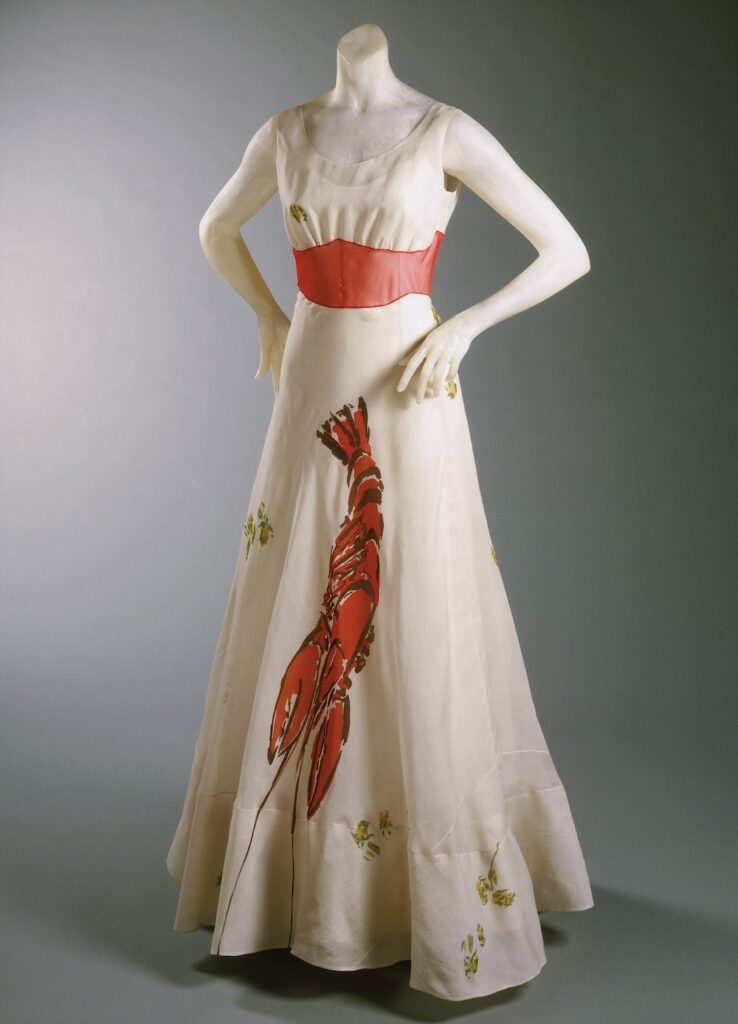
2023 marks the 50th anniversary of the death of fashion designer Elsa Schiaparelli, deceased in Paris on November 13, 1973. Scala remembers this great twentieth century Haute Couture interpreter with an in-depth study dedicated to an iconic dress: the Lobster Dress, capable of combining art, tailoring, feminine elegance, and brilliant creativity.

Elsa Luisa Maria Schiaparelli’s life was a succession of creativity and extravagant meetings. Born in Rome in 1890, raised by an intellectual family, she had a turbulent and upstream adolescence. Her poetic aspirations, as well as creative flair, destined her to exile and she was sent to a convent in Switzerland. In 1913, at the end of school, she left for London where a friend had offered her a position as a governess in an orphanage. England is where she found her first husband: the theosophist Count William de Wendt de Kerlor, from whom she separated a few years later.
Along with the wedding, Elsa started a new life in New York. Overseas she was involved in the trade of art works, and, thanks to connections she had with collectors and antique dealers, she began to spend time with the Dadaist avant-garde: Francis and Gaby Picabia, Man Ray, and Marcel Duchamp.
After World War I, Elsa returned to to Paris and became a pupil of the well-known designer Paul Poiret, and in 1925 she herself became a designer at the Maison Lamba. Her first real success in the fashion field came in 1927, thanks to the creation of black pullovers decorated with white trompe-l’œil designs.

Like Coco Chanel, Elsa Schiaparelli became known for having contributed to the definition (or rather, re-definition) of the canons for everyday fashion.
In 1928 she opened a business on Rue de la Paix called Schiaparelli – Pour le sport, specializing in pullovers, swimwear, and accessories. She experimented with fabrics of various types, using for her creations synthetic materials that were often paired with each other to create innovative cuts and more versatile garments. Geometric patterns and eccentric addons were used to enrich the garments. She quickly achieved great success, especially in the United States, which allowed her to enlarge the maison, renamed in 1932 as Schiaparelli – Pour le sport, pour la ville, pour le soir.
In the ’30s Paris became a fundamental artistic hub, the beating heart of the avant-gardes and collaboration with other artists became possible. Her first collaboration experiment occurred with the French-Russian writer Elsa Triolet. Together Triolet and Schiaparelli created Asprin necklace, a necklace composed of porcelain beads in the shape of aspirin tablets. Many other interesting collaborations with cubist and surrealist artists followed.
“For me, dress designing is not a profession but an art.”
The meeting between Salvador Dali and Elsa Schiaparelli was in the 1930’s as well. Their first four-handed project was a make-up powder case, whose shape resembles the rotating disc of a telephone device. The Dalì-Schaparelli duo went on to give life to many successful creations: the shoe-hat, the tear dress, and the skeleton dress, to name just a few.
However, the work for which they are most renowned is Lobster Dress, made famous by Wallis Simpson, who wore it shortly before her marriage to the Duke of Windsor in 1937. The magazine Vogue dedicated 8 pages to it which included a notorious photo shoot by Cecil Beaton.

World War II was obviously not a good period for the maison, and the post-war period marked a definitive stop for the designer. Her creations continued to be admired even overseas – as evidenced by a rare footage of the Istituto Luce Cinecittà dedicated to Parisian fashion of 1949 – without, however, succeding in the consumer market.
Elsa Schiaparelli died in Paris on November 13th 1973, and is commemorated for her eccentric clothes, the use of insects as a decorative element and the shocking pink color.
“I do not understand why, when I ask for grilled lobster in a restaurant, I’m never served a cooked telephone” The Secret Life of Salvador Dalí.
The theme of the lobster is a recurrent one in the work of Salvador Dali, fascinated by the shape and materiality of the crustacean, which since the 1930s also had strong erotic overtones.
The Lobster Telephone (1936), one of Dalì’s most celebrated artworks, is part of such as an important collection as that of the Tate Modern in London. The telephone was made by Dali for and together with Edward James, a painter friend and patron. It seems that the creation was born from a story told by James himself.
In 1937 Elsa Schiaparelli asked her friend Salvador Dali to design an evening dress in white silk, to be presented in the Summer/Autumn collection of that year. The artist drew a huge red lobster, then applied it to the front of the dress at the height of the pelvis. The dress was a real offense to the conformist thought and morals of the time. It was then worn by Wallis Simpson, a troublesome and much talked about character who nevertheless made it iconic.
Throughout the 1930s Dali was obsessed by the underwater world and, at the Universal Exposition in New York in 1939, he presented “The Dream of Venus”, a performance that included the appearance of models dressed as fresh fish. In particular, the lobsters were used to cover women’s private parts.
Scala is the official representative of some prestigious international museums whose fashion departments preserve the most significant clothes of the twentieth century. The Metropolitan in New York and the Victoria and Albert Museum in London to mention just a few among the most important. Visit the FASHION section of Scala archives.
Click the link for more images related to Elsa Schiaparelli.
If you did not find the image you were looking for, contact us and we will gladly carry out more in depth searches for you.
*****
In the cover: Lobster Dress. February 1937. Created with Salvador Dalì. Philadelphia Museum of Art, Philadelphia, USA